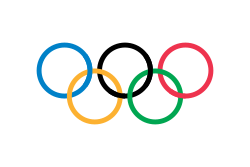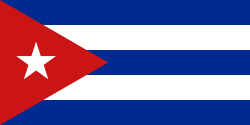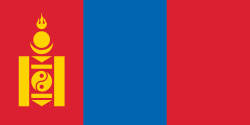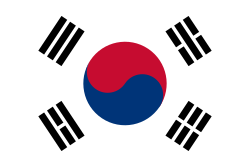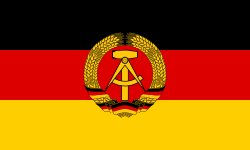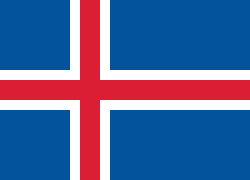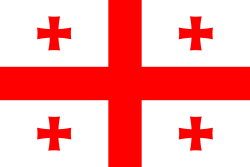Seznam olympijských medailistů v judu
Toto je seznam olympijských medailistů v judu.
Současné disciplíny
Superlehká váha
Pololehká váha
Lehká váha
Polostřední váha
Střední váha
Polotěžká váha
Těžká váha
Zrušená disciplína
Bez rozdílu hmotnosti
| Limit | |||||
|---|---|---|---|---|---|
| LOH 1964 | bez rozdílu vah | Nizozemsko (NED) | Japonsko (JPN) | Austrálie (AUS) | Tým sjednoceného Německa (EUA) |
| 1968 Ciudad de México | nebylo na programu LOH | ||||
| LOH 1972 | bez rozdílu vah | Nizozemsko (NED) | Sovětský svaz (URS) | Francie (FRA) | Velká Británie (GBR) |
| LOH 1976 | bez rozdílu vah | Japonsko (JPN) | Velká Británie (GBR) | Jižní Korea (KOR) | Sovětský svaz (URS) |
| LOH 1980 | bez rozdílu vah | Německá demokratická republika (GDR) | Francie (FRA) | Maďarsko (HUN) | Velká Británie (GBR) |
| LOH 1984 | bez rozdílu vah | Japonsko (JPN) | Egypt (EGY) | Západní Německo (FRG) | Rumunsko (ROU) |
Odkazy
Související články
Externí odkazy
- (anglicky) Přehled medailistů - muži superlehká váha
- (anglicky) Přehled medailistů - muži pololehká váha
- (anglicky) Přehled medailistů - muži lehká váha
- (anglicky) Přehled medailistů - muži polostřední váha
- (anglicky) Přehled medailistů - muži střední váha
- (anglicky) Přehled medailistů - muži polotěžká váha
- (anglicky) Přehled medailistů - muži těžká váha
- (anglicky) Přehled medailistů - muži bez rozdílu hmotnosti
Média použitá na této stránce
Olympijská vlajka
(c) I, Cmapm, CC BY-SA 3.0
The flag of the Soviet Union (1955-1991) using a darker shade of red.
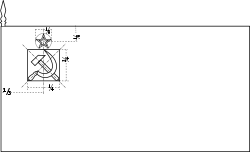
(c) I, Cmapm, CC BY-SA 3.0
The flag of the Soviet Union (1955-1991) using a darker shade of red.

Variant version of a flag of Japan, used between January 27, 1870 and August 13, 1999 (aspect ratio 7:10).
Flag of South Korea from October 1997 to May 2011. In May 2011, the exact colors were specified into their current shades.
Chinese Taipei Olympic Flag. According to the official website of Chinese Taipei Olympic Committee, Blue Sky(circle) & White Sun(triangles) above the Olympic rings is neither the National Emblem of the Republic of China, nor the Party Emblem of Kuomintang (KMT), but a design in between, where the triangles do not extend to the edge of the blue circle, as registered at International Olympic Committee in 1981 and digitally rendered in 2013. Besides, the blue outline of the five-petaled plum blossom is broader than the red one. Moreover, the CMYK code of the blue one and the Blue Sky & White Sun is "C100-M100-Y0-K0", and different from the Olympic rings (C100-M25-Y0-K0). Note that it's the only version recognized by IOC.
Flag of People's Republic of Mongolia 1945-1992
Autor: Scroch, Licence: CC BY-SA 3.0
Flag of Bulgaria (1971-1990). Flag of Bulgaria with Bulgarian coat from 1971.
Autor: Scroch, Licence: CC BY-SA 3.0
Flag of Bulgaria (1971-1990). Flag of Bulgaria with Bulgarian coat from 1971.
Flag of Second Polish Republic and later People's Republic of Poland in period from March 29, 1928 to March 10, 1980. Red shade used here is HTML "vermilion" #E34234. Proportion 5:8.
The civil ensign and flag of Belgium. It is identical to Image:Flag of Belgium.svg except that it has a 2:3 ratio, instead of 13:15.
Flag of Romania, (21 August 1965 - 22 December 1989/officialy 27 December 1989).

Construction sheet of the Flag of Romania as depicted in Decree nr. 972 from 5 November 1968.
- l = 2/3 × L
- C = 1/3 × L
- S = 2/5 × l
Flag of Romania, (21 August 1965 - 22 December 1989/officialy 27 December 1989).

Construction sheet of the Flag of Romania as depicted in Decree nr. 972 from 5 November 1968.
- l = 2/3 × L
- C = 1/3 × L
- S = 2/5 × l
Flag of Portugal, created by Columbano Bordalo Pinheiro (1857–1929), officially adopted by Portuguese government in June 30th 1911 (in use since about November 1910). Color shades matching the RGB values officially reccomended here. (PMS values should be used for direct ink or textile; CMYK for 4-color offset printing on paper; this is an image for screen display, RGB should be used.)
Flag of the unified Team of Germany for the Olympic Games, 1960–1968.
Flag of the Socialist Federal Republic of Yugoslavia (1946-1992).
The design (blazon) is defined in Article 4 of the Constitution for the Republic of Yugoslavia (1946). [1]
Flag of the Socialist Federal Republic of Yugoslavia (1946-1992).
The design (blazon) is defined in Article 4 of the Constitution for the Republic of Yugoslavia (1946). [1]
The Flag of Iceland.
- Horizontal aspect ratio: 7:1:2:1:14;
- Vertical aspect ratio: 7:1:2:1:7.
Vlajka České republiky. Podoba státní vlajky České republiky je definována zákonem České národní rady č. 3/1993 Sb., o státních symbolech České republiky, přijatým 17. prosince 1992 a který nabyl účinnosti 1. ledna 1993, kdy rozdělením České a Slovenské Federativní republiky vznikla samostatná Česká republika. Vlajka je popsána v § 4 takto: „Státní vlajka České republiky se skládá z horního pruhu bílého a dolního pruhu červeného, mezi něž je vsunut žerďový modrý klín do poloviny délky vlajky. Poměr šířky k její délce je 2 : 3.“
Russian Olympic Committee flag used in 2020 and 2022, for the Olympics
Vlajka České republiky. Podoba státní vlajky České republiky je definována zákonem České národní rady č. 3/1993 Sb., o státních symbolech České republiky, přijatým 17. prosince 1992 a který nabyl účinnosti 1. ledna 1993, kdy rozdělením České a Slovenské Federativní republiky vznikla samostatná Česká republika. Vlajka je popsána v § 4 takto: „Státní vlajka České republiky se skládá z horního pruhu bílého a dolního pruhu červeného, mezi něž je vsunut žerďový modrý klín do poloviny délky vlajky. Poměr šířky k její délce je 2 : 3.“
Flag of Georgia used from 1990 to 2004, with slightly different proportions than the 1918 to 1921 flag.
Flag of South Korea from 21 February 1984 to 15 October 1997, when the exact colors were specified into their shades.
The flag of Brazil from 1968 to 1992 with 23 stars.
Flag of South Korea (1949-1984)
Flag of Belarus 1995-2012
The Canadian Red Ensign, the national flag of Canada from 1957 to 1965. (see: the Canadian Red Ensign on the Register of Arms, Flags and Badges)
The Egyptian flag (1972-1984). Also the flag of Libya (1972-1977) and Syria (1972-1980), when the three countries formed the nominal “Federation of Arab Republics”. (For a map of the federation, see Image:Esl.PNG.)
The Arab text in the scroll held by the “Golden Hawk of Qureish” reads Arabic اتحاد الجمهوريات العربية, ittiħād al-jumhūriyyāt al-`arabiyya, i.e. the Federation (literally “Union”) of Arab Republics — in a quasi-Kufic script (in its original form, with a very ornamental letter dal د).
Flag of People's Republic of Mongolia 1945-1992



